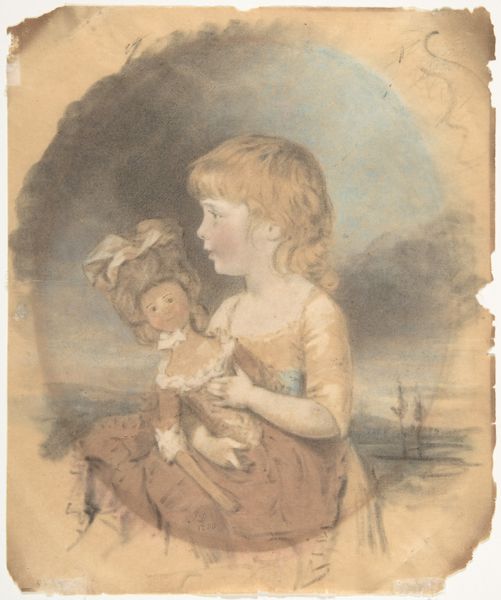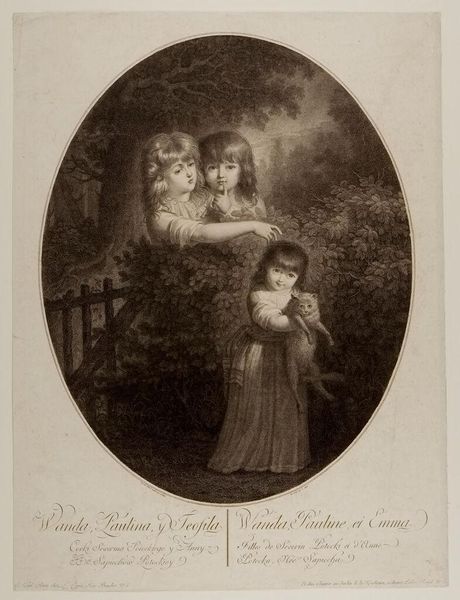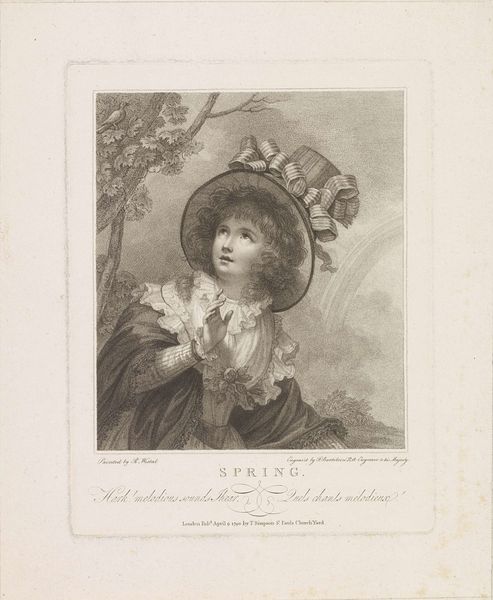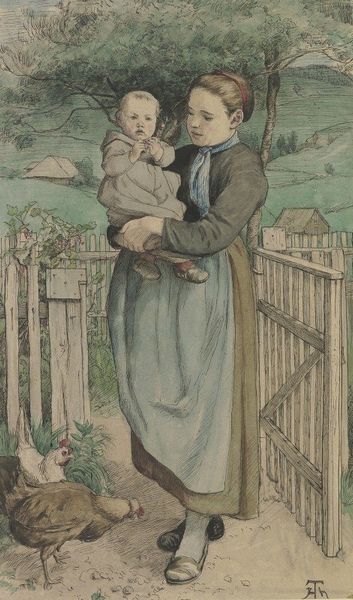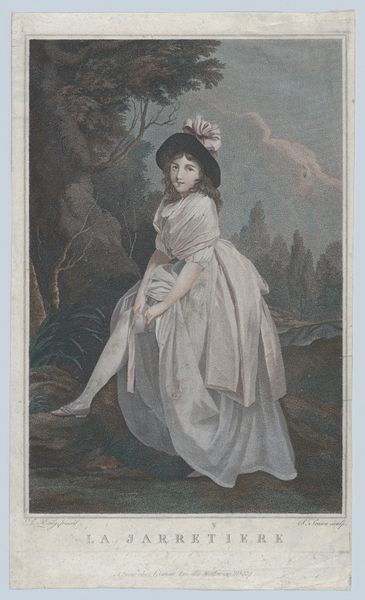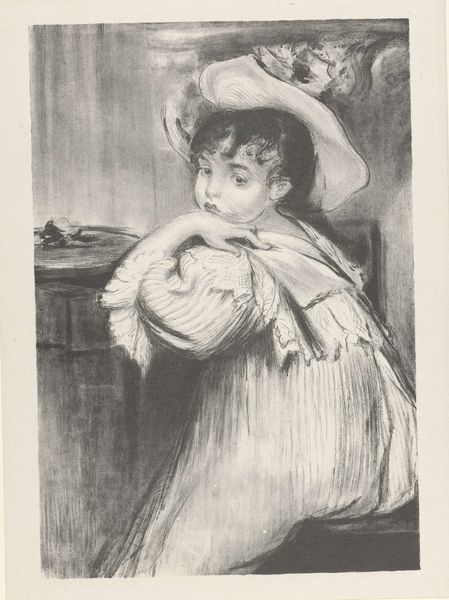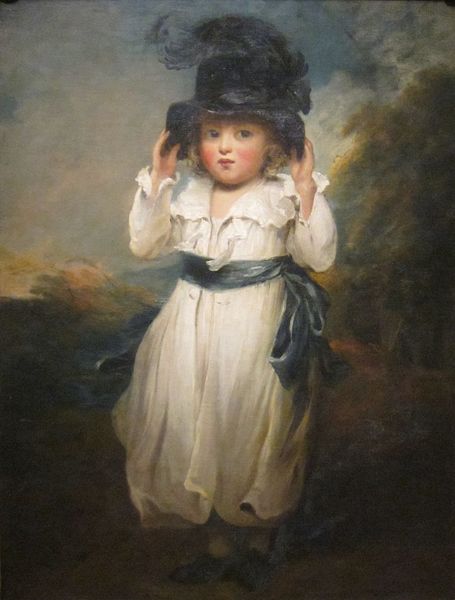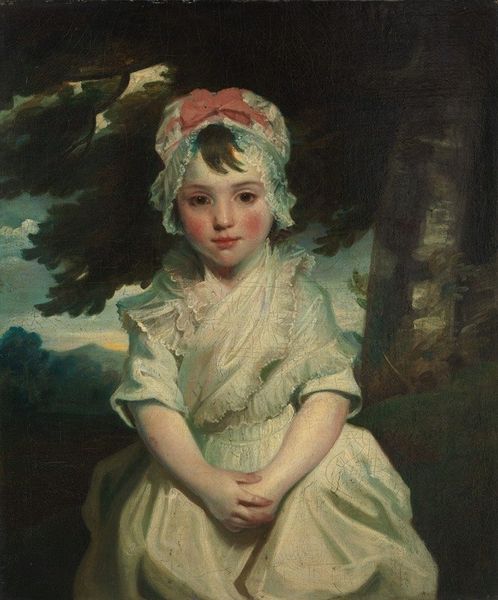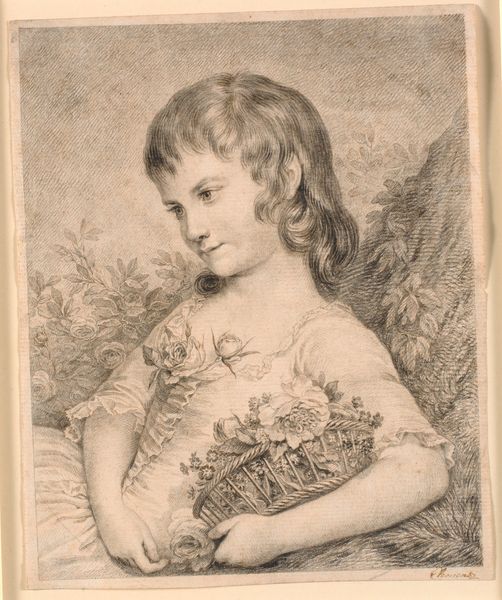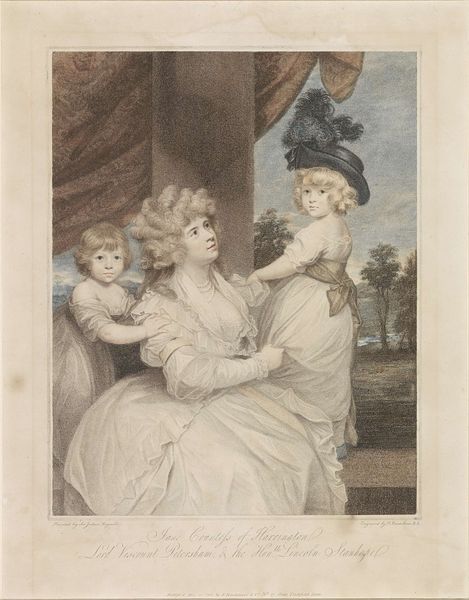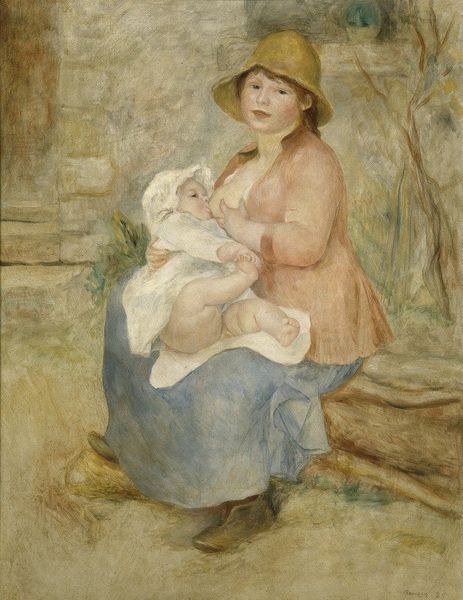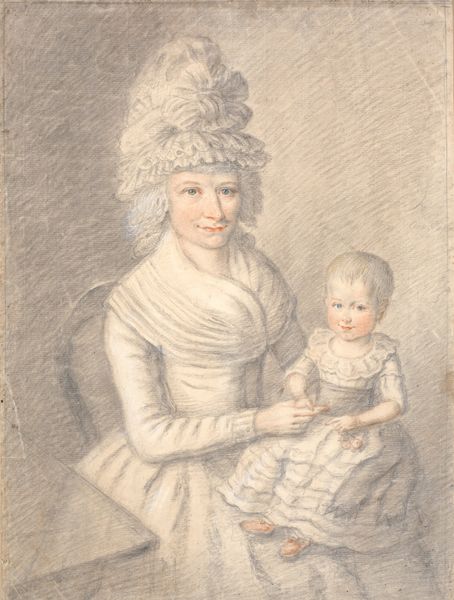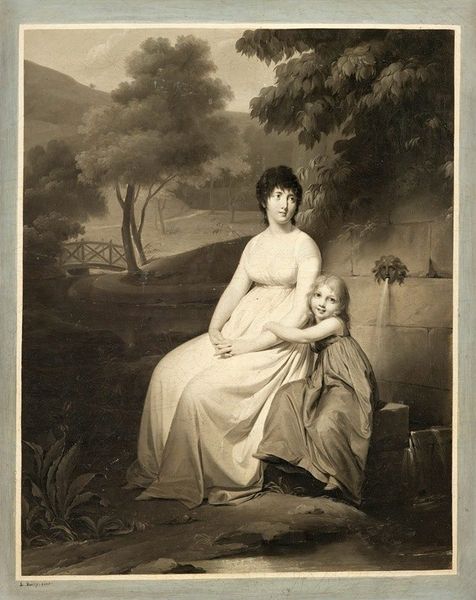
Dimensions: height 227 mm, width 169 mm
Copyright: Rijks Museum: Open Domain
Curator: Looking at this delightful print from sometime between 1738 and 1815, entitled "Meisje met kat"—or "Girl with Cat"—after a design by Sir Joshua Reynolds, and engraved by Francesco Bartolozzi, it's instantly charming, isn’t it? Editor: Absolutely! There's something incredibly soft and delicate about it, from the way the girl clutches the kitten to the diffuse light in the landscape. It feels almost weightless. Curator: Rococo through and through. You see how Bartolozzi has captured the ideal of feminine innocence? The young girl is elevated to this symbolic representation through posture, expression, the very tender relationship shown between the child and the cat—both creatures almost ethereal. It evokes feelings of purity, but also possession, somehow. Editor: I am drawn to the details in the fabric, specifically the rendering of the girl's dress. What kind of textile was used to create that effect? And how did Bartolozzi, working with an engraving medium, translate Reynolds’ painted image into these textural lines that define the girl's attire? What kind of tools would he have used? I can almost feel the give and take of that fabric, you know? Curator: The cat serves a purpose too; domestic animals in portraits represent qualities. Loyalty, affection. Here, the cat might be about youthful innocence and tenderness, but perhaps something more cunning. Editor: And speaking of tools, let's talk about color here. This is an engraving, of course. And though we see some hues here, what was that process like at the time to generate this polychromatic image through a printed matrix? How are they consuming and perceiving this artwork in the period it was made? I mean, prints such as these made artworks reproducible and gave access to those in lower socio-economic tiers... Curator: Indeed. They allowed broader engagement with imagery and with symbolic content. Each impression is a conduit through which that symbolic order is perpetuated and reinforced. It’s intriguing how such detailed, loaded representations became accessible. Editor: It is. This makes me consider the role this artwork could have had in that time. Art entering domestic spaces not as single prized things, but rather commodities! So many implications with art that can be purchased. Thank you. Curator: My pleasure. And that is exactly the long-lasting enchantment of those little scenes: how the individual and universal mingle with the political.
Comments
No comments
Be the first to comment and join the conversation on the ultimate creative platform.

